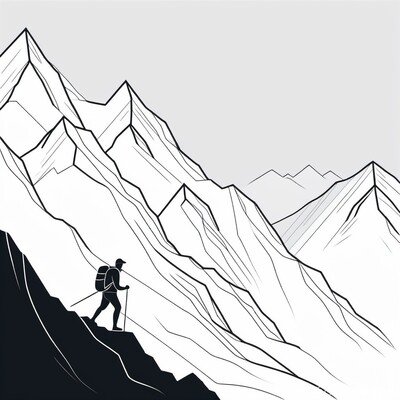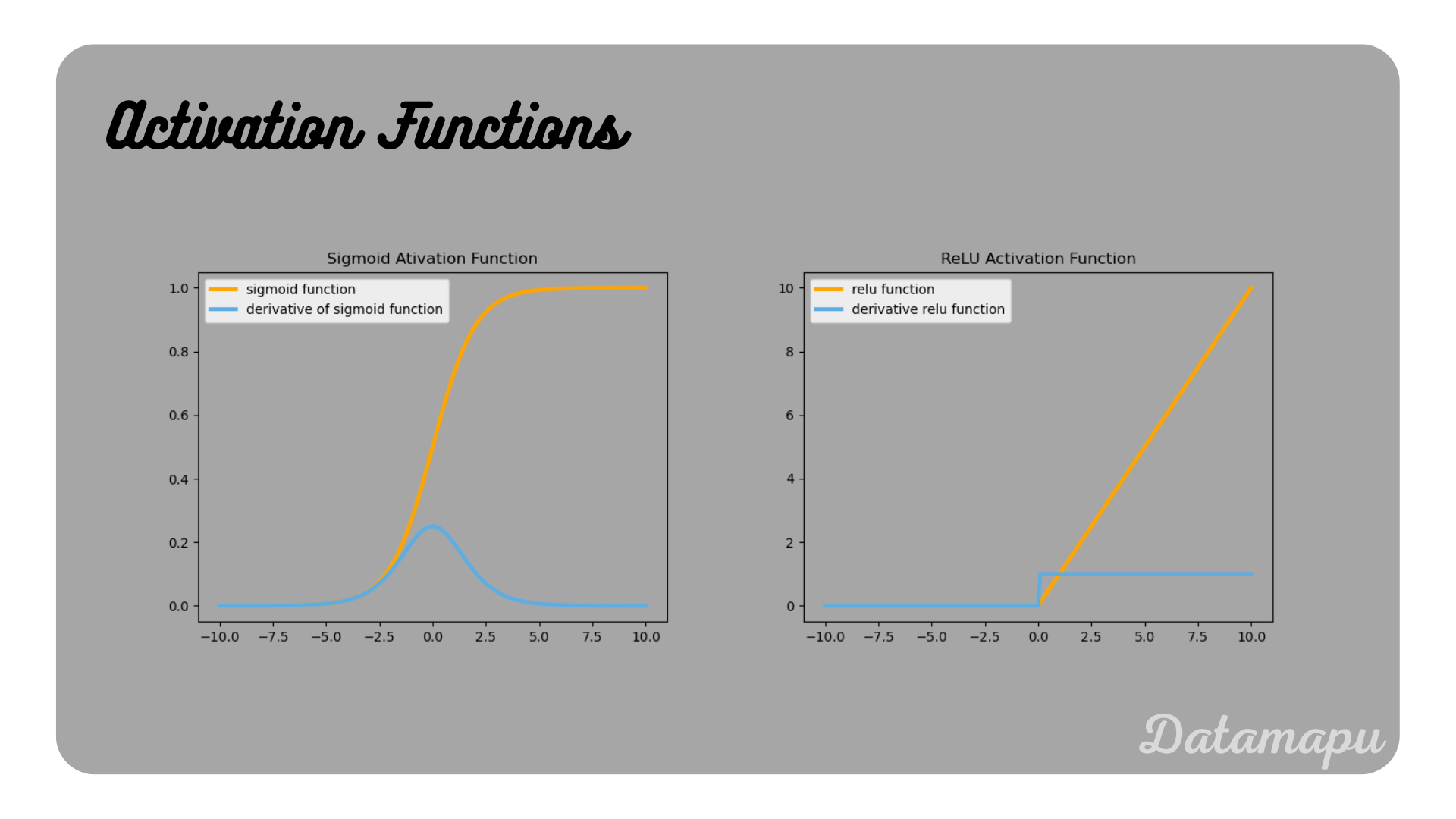Gradient Descent
- 8 minutes read - 1649 wordsIntroduction
Gradient Descent is a mathematical optimization technique, which is used to find the local minima of a function. In Machine Learning it is used in a variety of models such as Gradient Boosting or Neural Networks to minimize the Loss Function. It is an iterative algorithm that takes small steps towards the minimum in every iteration. The idea is to start at a random point and then take a small step into the direction of the steepest descent of this point. Then take another small step in the direction of the steepest descent of the next point and so on. The direction of the steepest descent is determined using the gradient of the function, so its name Gradient Descent.
 Gradient Descent illustrated.
Gradient Descent illustrated.
Intuition
Gradient Descent is often compared to descending from the top of a mountain to a valley. To reach the valley, we take individual steps. After each step, we check which is the direction of the steepest descent for the next step and move in this direction. The step size we take may vary and affects how long we need to reach the minimum and if we reach it at all. Very small steps mean that it will take very long to get to the valley. However, if the steps are too large, especially close to the minimum, we may miss it by taking a step over it.
 Gradient Descent intuition.
Gradient Descent intuition.
Definition
Gradient Descent is an iterative method that aims to find the minimum of a differentiable function. In the context of Machine Learning, this is usually the loss function
with
 Small and large learning rate illustrated.
Small and large learning rate illustrated.
Variants of Gradient Descent
Batch Gradient Descent
In the previous definition, we didn’t talk about how to apply Gradient Descent in practice. When we train a Neural Net we have a defined training dataset, which we train for a certain number of epochs. Training for one epoch means that the entire training dataset was processed by the Neural Network (forward and backward pass) once. The most classical variant of Gradient Descent is also sometimes called Batch Gradient Descent. In this case, the entire training dataset is processed by a forward pass through the Neural Net. Then the gradients of the loss function of all samples from the training dataset are calculated. The weights
for m in range(nr of epochs):
calculate the derivative of the loss function for all samples in the dataset
take the mean of all these derivatives
update the weights w = w - learning rate * mean of all derivatives
Stochastic Gradient Descent
In Stochastic Gradient Descent, the samples of the training data are considered individually. For each sample the gradient is calculated and this gradient is used to update the weights. If the training data consists of
The difference to the above formulation of (Batch-)Gradient Descent is that in this case, the gradient depends on the individual input
for m in range(nr of epochs):
for n in range(nr of training samples):
calculate the derivative of the loss function for each sample n
update the weights w = w - learning rate * derivative of sample n
Mini-Batch Gradient Descent
Mini-Batch Gradient Descent is a compromise of the above two variants and is very commonly used. In this case, a subset (Mini-Batch) is used and processed through the Neural Network. The gradients of these mini-batches are then calculated and the mean is taken to update the weight. Then the next mini-batch is processed through the forward pass of the Neural Net and the mean of the gradient is used to update the weight. This process is repeated until the entire dataset is used, then the Neural Net has been trained for one epoch. Common mini-batch sizes (
In this case, the gradient depends on the batch size
for m in range(nr of epochs):
for b in range(nr of batches):
calculate the derivative of the loss function for all samples in the batch
take the mean of all these derivatives
update the weights w = w - learning rate * mean of all derivatives
 Illustration of the Convergence for (Batch) Gradient Descent, Stochastic Gradient Descent, and Mini-Batch Gradient Descent.
Illustration of the Convergence for (Batch) Gradient Descent, Stochastic Gradient Descent, and Mini-Batch Gradient Descent.
Vanishing / Exploding Gradients
When training a Neural Net, Gradient Descent is used in backpropagation to optimize the weights and biases. The phenomenon of Vanishing Gradients refers to the scenario in which the gradient gets very small until it almost vanishes. In this case, the Neural Net is not able to learn anymore, because the gradient is used to update the weights and biases. If the gradient approaches zero, no update is happening. On the other hand, the phenomenon of Exploding Gradients refers to the scenario that the gradients keep growing while they are passing backward through the Neural Net.
In backpropagation, the gradient of the loss function with respect to the weights (and biases) is calculated. For that, the partial derivatives of the loss function with respect to each weight need to be calculated using the chain rule
where
 Illustration of the Sigmoid and the ReLU activation functions and their derivatives.
Illustration of the Sigmoid and the ReLU activation functions and their derivatives.
Summary
Gradient Descent is a technique to numerically approach the minimum of a given function. In the context of Machine Learning, we use Gradient Descent for training a model, e.g. a Neural Net. In this case, the gradient of the loss function is used to optimize the weights of the model. Different variants of Gradient Descent exist, in practice often the mini-batch Gradient Descent is used, where subsets (batches) of the training dataset are used to update the weights. This is less computationally expensive than the classical variant of (Batch-)Gradient Descent.
If this blog is useful for you, please consider supporting.
